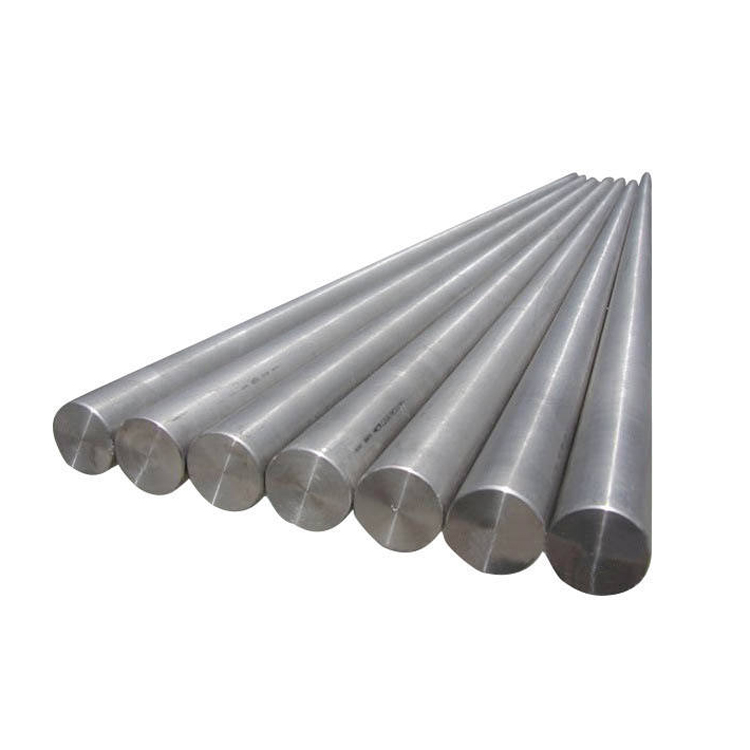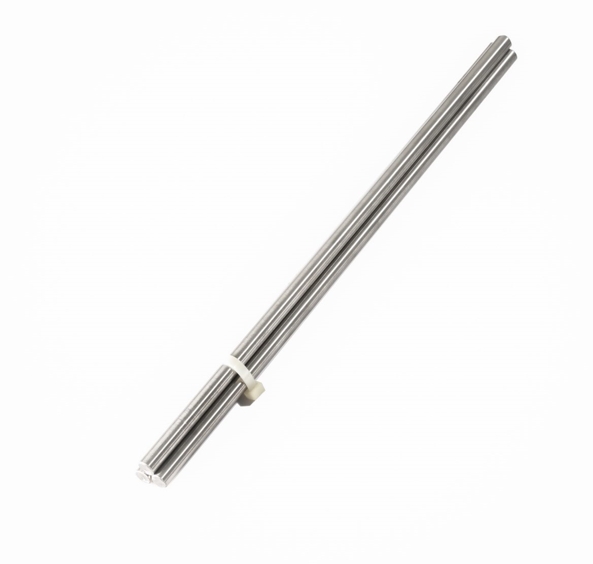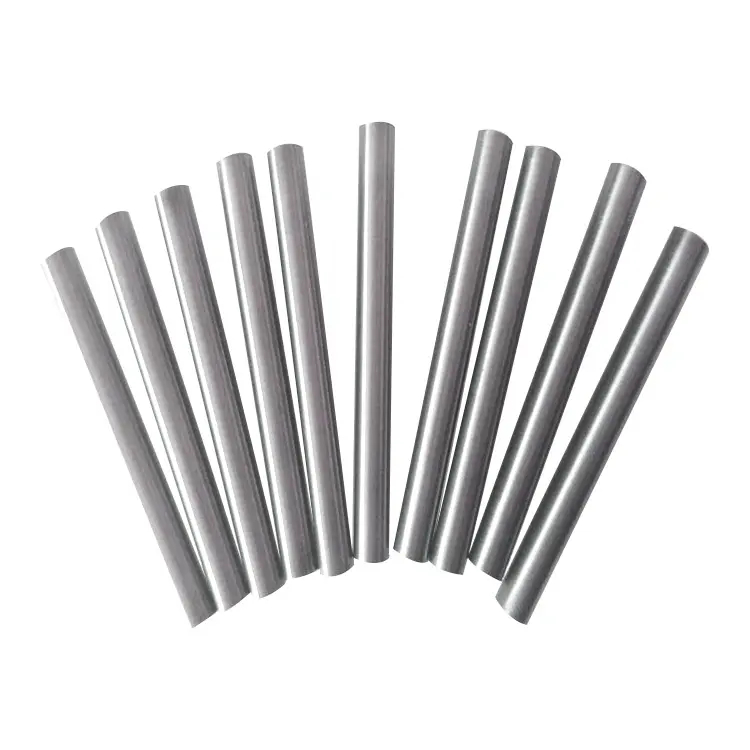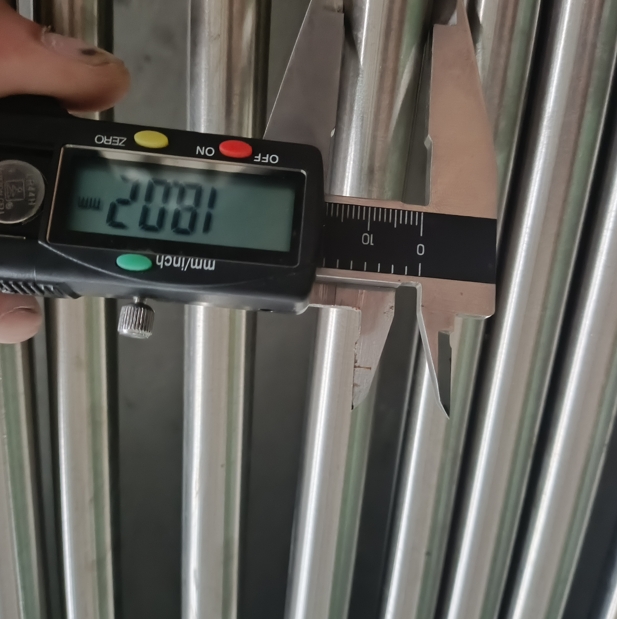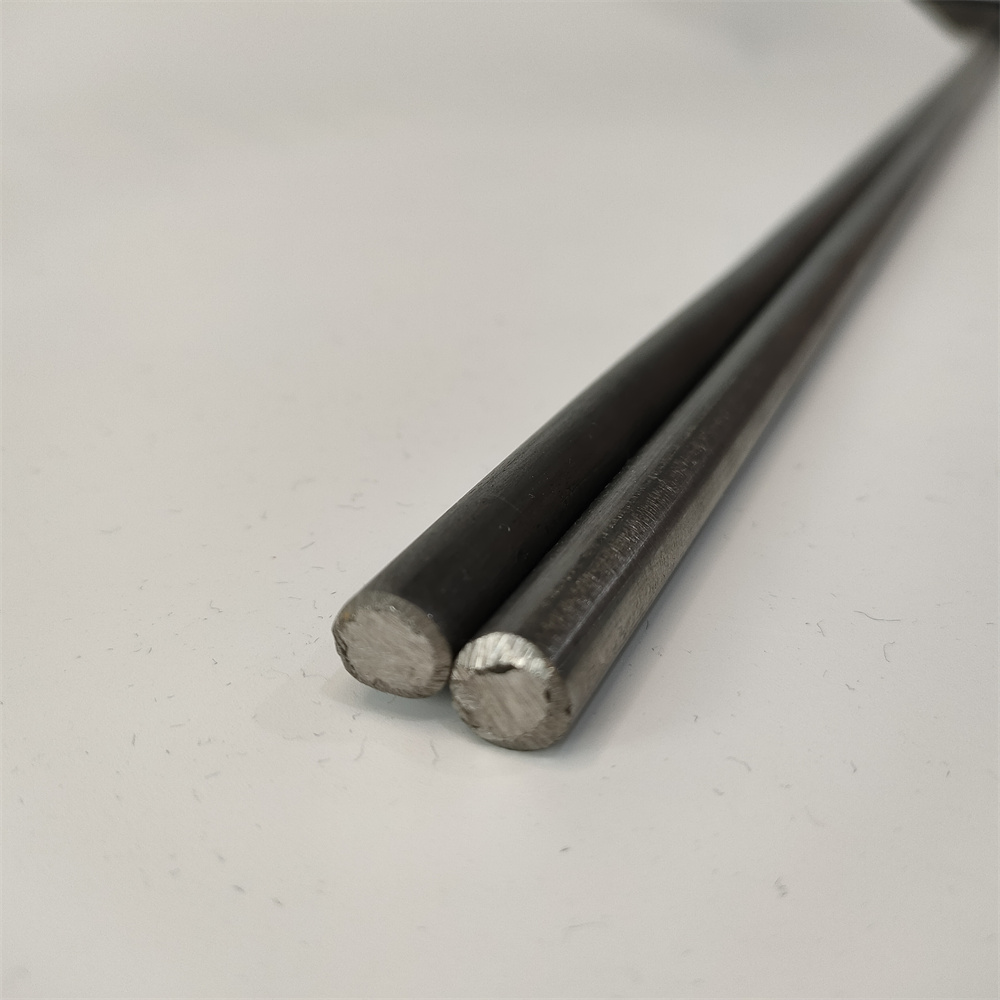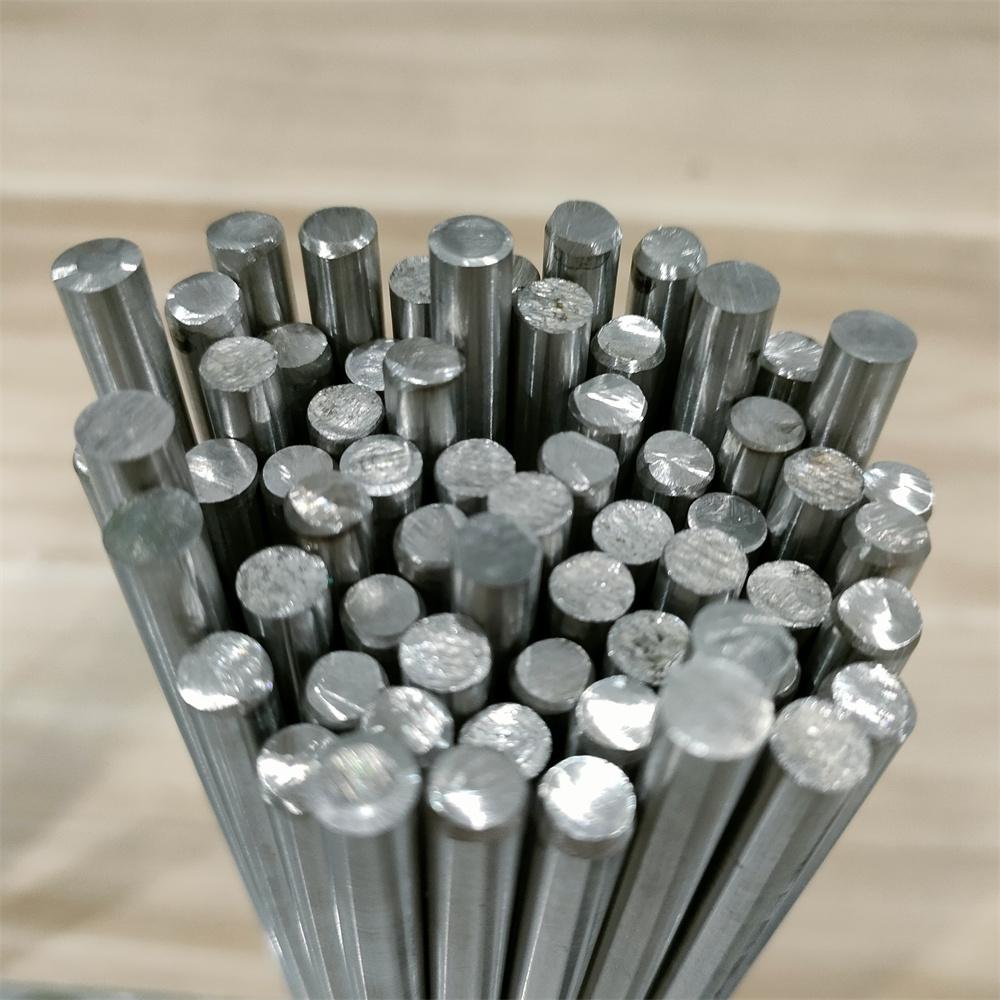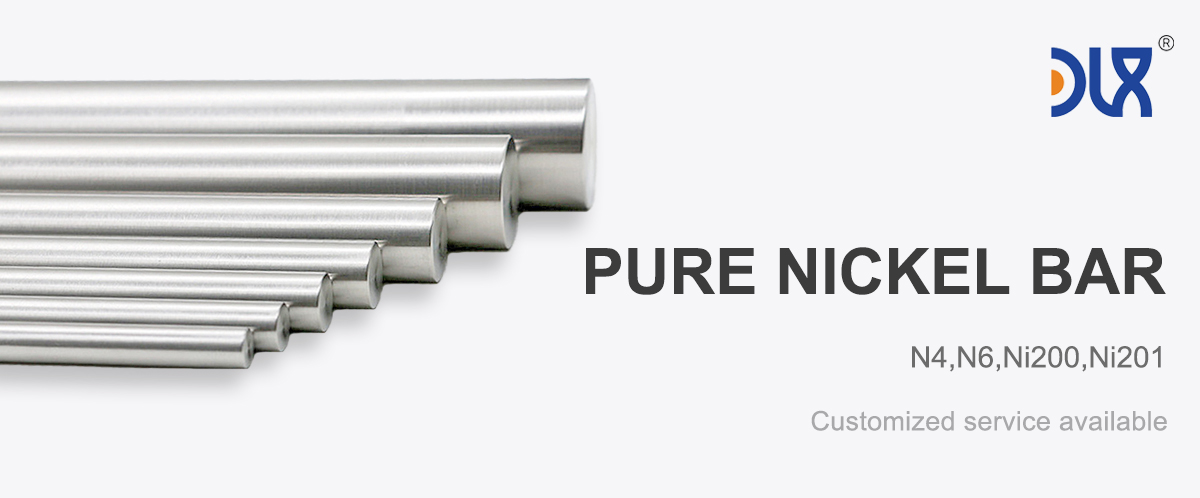
Pure nickel rods are a cornerstone of our product lineup, built to tackle the toughest industrial challenges with ease. These solid bars, made from 99%+ pure nickel, offer incredible corrosion resistance, strength, and electrical conductivity. Whether you’re crafting components for chemical reactors or high-performance electronics, our pure nickel rods deliver reliability and longevity. We’ve been honing our production process for years, ensuring every rod meets top standards for industries like chemical processing, aerospace, and renewable energy. Let’s dive into the materials, applications, industry trends, and why our company stands out as your go-to source for pure nickel rods.
For more details, pls directly contact us.
The materials behind our pure nickel rods are all about purity and performance. We start with high-grade nickel, hitting 99.6% for Nickel 200 or 99.0% with low carbon (less than 0.02%) for Nickel 201 . Trace elements like iron (up to 0.4%) and manganese (0.35%) are carefully added to boost mechanical strength without compromising the rod’s core properties—corrosion resistance and thermal stability. We source from ethical suppliers, keeping impurities like sulfur low to prevent brittleness. Our manufacturing process involves precision melting and forging, producing rods with consistent structure and no defects. This ensures they perform flawlessly, whether they’re machined into electrodes or used in corrosive chemical environments.
| Grade | Nickel (Ni)+ Cobalt (Co) | Copper (Cu) | Silicon (Si) | Manganese (Mn) | Carbon (C) | Magnesium (Mg) | Sulfur (S) | Phosphorus (P) | Iron (Fe) |
| 99.9% | ≤0.015 | ≤0.03 | ≤0.002 | ≤0.01 | ≤0.01 | ≤0.001 | ≤0.001 | ≤0.04 | |
| 99.6% | 0.1 | 0.1 | 0.05 | 0.1 | 0.1 | 0.005 | 0.002 | 0.1 |
Physical & Mechanical Properties
| Grades | N4/Ni201 | N6/Ni200 |
| Density | 8.9g/cm³ | 8.9g/cm³ |
| Melting Point | 1455°C | 1445-1470℃ |
| Coefficient of Thermal Expansion | 13.0µm/m·°C | 13.3×10⁻⁶/℃ |
| Thermal Conductivity | 10.1W/m·K | 90.7 W/m·K |
| Electrical Resistivity | 0.103×10⁻⁶Ω·/m (at 20℃) | |
| Electrical Conductivity | 14.6% IACS | |
| Tensile Strength | ≥450MPa | ≥450 MPa |
| Yield Strength | ≥200MPa | ≥150 MPa |
| Elongation at Break | ≥40% | ≥40% |
| Hardness | ≤150 |
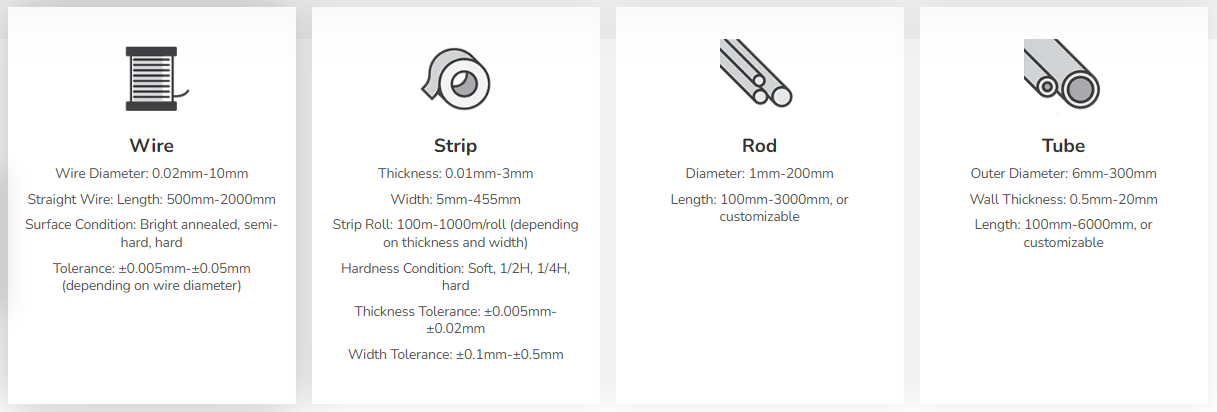
For more details, pls directly contact us.
We offer pure nickel rods in grades tailored to industrial needs. Nickel 200, with 99.6% purity, is our workhorse for general applications, delivering a tensile strength of around 450 MPa when annealed. It’s perfect for chemical processing and electronics. Nickel 201, with its low carbon content, excels in high-temperature settings above 315°C, avoiding intergranular corrosion. For tougher jobs, our cold-worked Nickel 200 rods hit 600–800 MPa, ideal for high-strength components like welding electrodes. With a melting point of 1435–1446°C, these rods handle extreme heat with ease. We provide custom sizes, from 3mm diameters for precision parts to 50mm for structural uses, all tested to ASTM standards for quality assurance.
Corrosion resistance is where pure nickel rods shine, and it’s a huge advantage in industrial settings. The natural oxide layer on these rods acts like a shield, standing up to alkalis, acids, and saltwater. In chemical processing, where equipment faces caustic solutions or acidic gases, our rods keep components like reactor linings and valves intact for years. We’ve supplied rods for tanks handling hydrochloric acid, and they show minimal wear even after prolonged exposure. In marine applications, they resist pitting from saltwater, outperforming materials like steel. Compared to other metals, pure nickel rods last longer in reducing environments, saving you on maintenance and replacements.
Comparison Parameters Table
| Parameter | Nickel 200 (Annealed) | Nickel 201 (Annealed) | Nickel 200 (Cold-Worked) |
|---|---|---|---|
| Purity (%) | 99.6 | 99.0 (carbon <0.02) | 99.6 |
| Melting Point (°C) | 1435-1446 | 1435-1446 | 1435-1446 |
| Tensile Strength (MPa) | 450 | 400-450 | 600-800 |
| Density (g/cm³) | 8.89 | 8.89 | 8.89 |
| Electrical Resistivity (µΩ·cm) | 9.6 | 8.5 | 9.6 |
| Corrosion Resistance | Excellent in reducing environments, alkalis, and salts | Superior at high temps (>315°C), resists embrittlement | Similar to annealed, less ductile |
| Thermal Conductivity (W/m·K) | 90.9 | 79.3 | 90.9 |
| Typical Applications | Chemical reactors, electronics | High-temp chemical processing, aerospace | High-strength electrodes, structural components |
Applications for pure nickel rods are vast and varied. In chemical processing, they’re used for reactor components, heat exchangers, and piping systems that handle corrosive substances. In electronics, they’re machined into connectors and electrodes, leveraging their 9.6 µΩ·cm resistivity for efficient energy flow. Welding is a big one—our rods serve as electrodes or filler material, creating strong, corrosion-resistant joints for chemical plants or marine equipment. Aerospace relies on them for lightweight, durable structural parts. Renewable energy is another key area, with rods used in solar panel frames and hydrogen production systems. We’ve even seen them in medical equipment, thanks to their biocompatibility. From small machined parts to large structural rods, our pure nickel rods adapt to any industrial challenge.
The pure nickel rod market is on a roll, valued at $1.9 billion in 2025 and projected to hit $3.6 billion by 2033, with a 7.4% CAGR. Chemical processing is a major driver, especially in regions like Asia-Pacific, where industrial growth is booming. Electric vehicles (EVs), growing at 15% annually, use pure nickel rods in battery production for corrosion-resistant components. Renewable energy, including solar and hydrogen systems, demands durable materials. Sustainability is trending—we’re seeing more recycled nickel, and we’re leading the charge with eco-friendly sourcing. High-purity rods are in demand for advanced applications, and stricter regulations call for better corrosion resistance. Nickel price volatility is a challenge, but our stable supplier contracts keep costs predictable.
Our company’s advantage lies in our relentless focus on quality and customization. We test every rod with spectrometry to confirm purity, a step not all suppliers bother with. In-house production cuts delivery times by up to two weeks compared to industry norms. Need a specific size or finish? We tailor rods to your exact specs, no extra costs for unnecessary features. Our tech support team is always ready, helping with everything from grade selection to application optimization. In a recent chemical plant project, our Nickel 201 rods extended equipment life by 28% in a corrosive setting. Compared to standard offerings, our rods have fewer defects, meaning less downtime and better performance for your operations.
Let’s talk materials in more detail. Pure nickel’s face-centered cubic structure gives it excellent malleability, allowing us to forge rods with precision. We keep sulfur content low to avoid brittleness, and our annealing process delivers rods with up to 45% elongation for machining flexibility. Compared to alloyed nickels, our pure nickel rods offer superior corrosion resistance in reducing environments, making them ideal for chemical processing. We also provide surface treatments like polishing for specific applications, adding versatility.
On corrosion, the oxide film on pure nickel rods is a game-changer. It resists uniform corrosion in alkalis and acids, with ASTM tests showing minimal weight loss in harsh environments. In chemical reactors, this ensures components stay intact. For welding, it means joints that hold up in corrosive settings. The EV sector relies on our rods for battery components, and we’re innovating with smaller diameters for compact systems.
Applications keep growing. In chemical processing, our rods handle 700°C in heat exchangers without oxidizing. Electronics use them for high-conductivity connectors. Welding electrodes made from our rods create durable joints in petrochemical plants. Marine applications benefit from saltwater resistance, while renewable energy uses them in hydrogen production. Trends show rods in additive manufacturing for custom parts, and our ISO 9001-certified production scales from prototypes to bulk orders.
Industry analysis highlights supply chain shifts, with localized sourcing on the rise post-pandemic. Nickel price fluctuations are a hurdle, but our hedging ensures stable pricing. Green tech, like hydrogen production, favors pure nickel rods’ durability, and we’re pioneering recycled variants to cut emissions.
In a company comparison, while typical suppliers might skimp on testing, we use advanced spectrometry for every rod. Our lead times are shorter, and we offer custom sizes or finishes. Clients report 22% better performance in corrosive environments with our rods. It’s not just about supplying rods—it’s about delivering solutions that keep your operations running smoothly.
Pure nickel rods are essential for modern industries, and we’re committed to delivering the best. From materials and grades to applications and trends, our rods offer unmatched reliability. Whether you need them for chemical processing, welding, or electronics, we’ve got the quality and expertise to make it happen.
For more details, pls directly contact us.
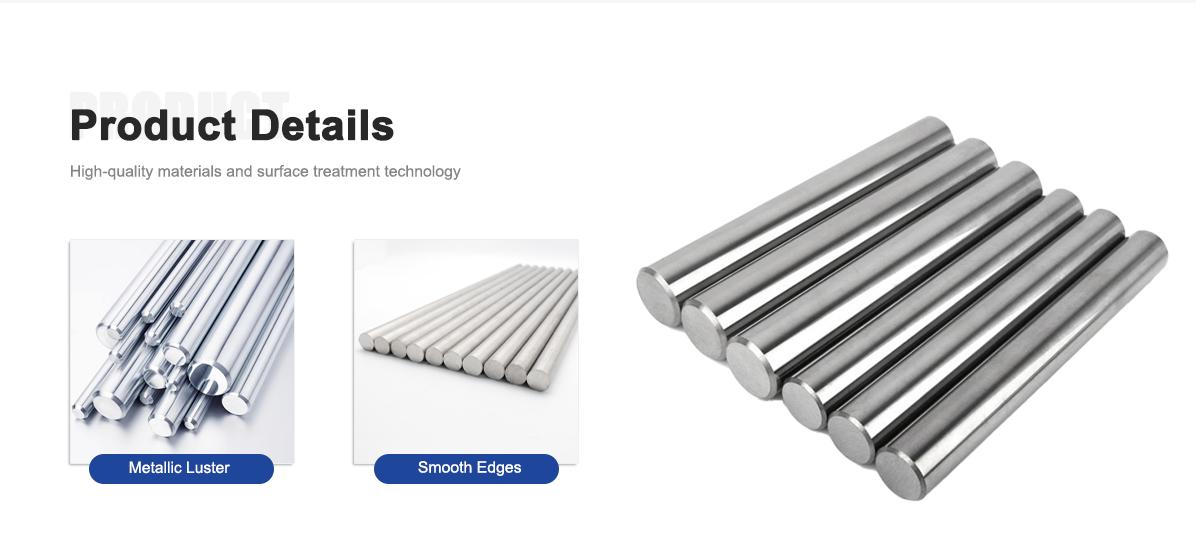
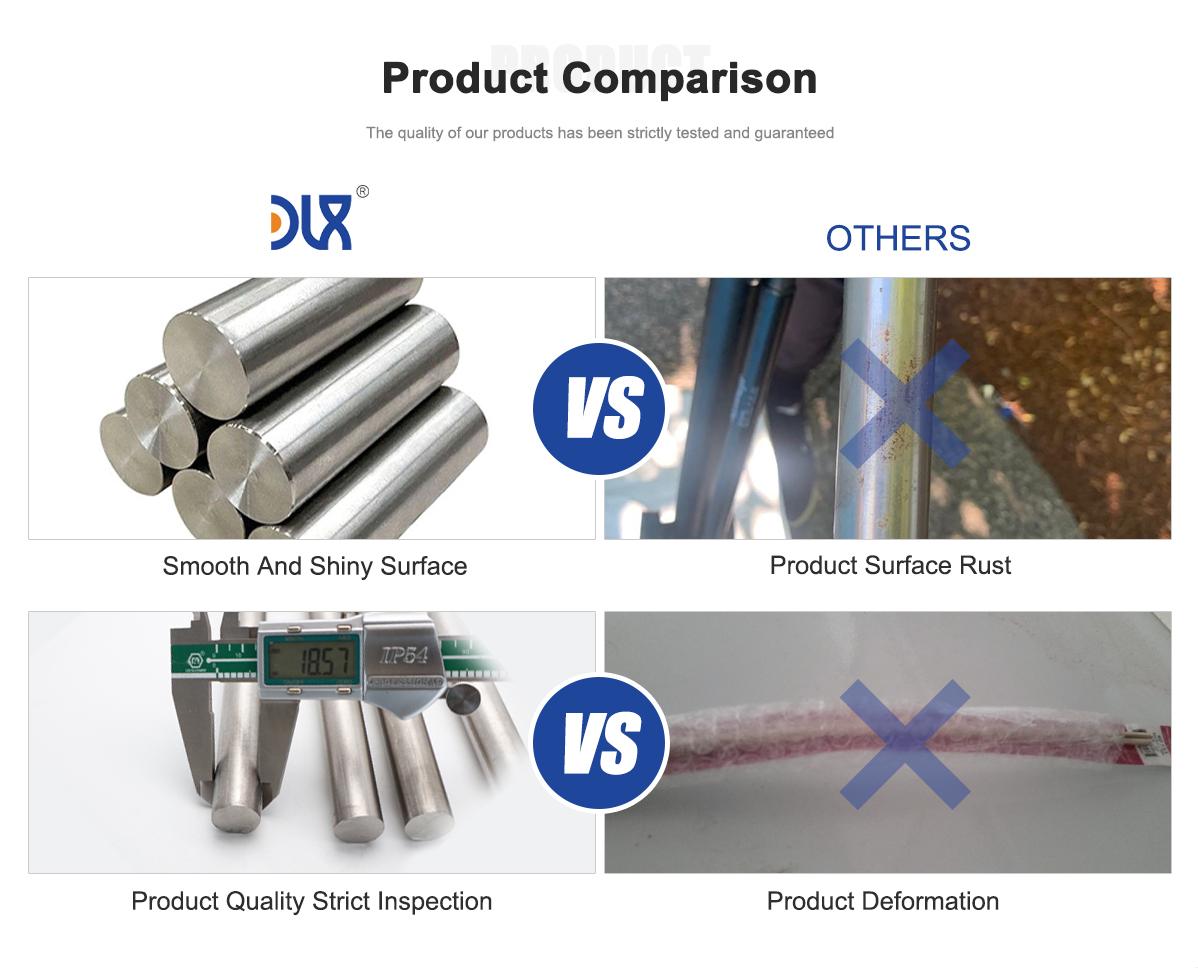
About Us:
Our 12,000㎡ factory is equipped with complete capabilities for research, production, testing, and packaging. We strictly adhere to ISO 9001 standards in our production processes, with an annual output of 1,200 tons. This ensures that we meet both quantity and quality demands. Furthermore, all products undergo rigorous simulated environment testing including high temperature, high pressure, and corrosion tests before being dispatched, ensuring they meet customer specifications.
For all our clients, we offer timely and multilingual after-sales support and technical consulting, helping you resolve any issues swiftly and efficiently.

Client Visits
Building Stronger Partnerships

We support all kinds of testing:


FAQs:
What are pure nickel rods?Pure nickel rods are solid, high-purity (99%+) nickel bars used for their corrosion resistance, strength, and conductivity in industrial applications.
What materials are used in pure nickel rods?They’re made of 99%+ nickel with trace amounts of iron (up to 0.4%), manganese (0.35%), and carbon (0.15% or less) to enhance durability.
What are the common grades of pure nickel rods?Key grades include Nickel 200 (99.6% purity) for general use and Nickel 201 (low carbon, <0.02%) for high-temperature applications.
What are the main applications of pure nickel rods?They’re used in chemical processing for reactor components, electronics for connectors, welding electrodes, and aerospace for structural parts.
How do pure nickel rods resist corrosion?Their natural oxide layer protects against alkalis, acids, and saltwater, ensuring longevity in harsh industrial environments.
What are the industry trends for pure nickel rods?The market is growing at a 7.4% CAGR, driven by demand in chemical processing, EVs, and renewable energy, with a focus on sustainable sourcing.
What is the melting point of pure nickel rods?The melting point ranges from 1435–1446°C, making them suitable for high-temperature industrial processes.
What is the tensile strength of pure nickel rods?Annealed rods typically have a tensile strength of 400–450 MPa, offering a balance of strength and ductility for industrial use.

